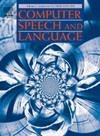DSTM: A transformer-based model with dynamic-static feature fusion in speech emotion recognition
IF 3.1
3区 计算机科学
Q2 COMPUTER SCIENCE, ARTIFICIAL INTELLIGENCE
引用次数: 0
Abstract
With the support of multi-head attention, the Transformer shows remarkable results in speech emotion recognition. However, existing models still suffer from the inability to accurately locate important regions in semantic information at different time scales. To address this problem, we propose a Transformer-based network model for dynamic-static feature fusion, composed of a locally adaptive multi-head attention module and a global static attention module. The locally dynamic multi-head attention module adapts the attention window sizes and window centers of the different regions through speech samples and learnable parameters, enabling the model to adaptively discover and pay attention to valuable information embedded in speech. The global static attention module enables the model to use each element in the sequence fully and learn critical global feature information by establishing connections over the entire input sequence. We also use the data mixture training method to train our model and introduce the CENTER LOSS function to supervise the training of the model, which can better speed up the fitting speed of the model and alleviate the sample imbalance problem to a certain extent. This method achieved good performance on the IEMOCAP and MELD datasets, proving that our proposed model structure and method have better accuracy and robustness.
DSTM:语音情感识别中基于变压器的动静特征融合模型
在多头注意力的支持下,Transformer 在语音情感识别方面取得了显著效果。然而,现有模型仍存在无法在不同时间尺度上准确定位语义信息重要区域的问题。为解决这一问题,我们提出了一种基于 Transformer 的动态-静态特征融合网络模型,该模型由局部自适应多头注意力模块和全局静态注意力模块组成。局部动态多头注意力模块通过语音样本和可学习参数调整不同区域的注意力窗口大小和窗口中心,使模型能够自适应地发现和关注语音中蕴含的有价值信息。全局静态注意力模块使模型能够充分利用序列中的每个元素,并通过在整个输入序列中建立连接来学习关键的全局特征信息。我们还采用了数据混合训练法来训练模型,并引入了 CENTER LOSS 函数来监督模型的训练,这可以更好地加快模型的拟合速度,并在一定程度上缓解样本不平衡问题。该方法在 IEMOCAP 和 MELD 数据集上取得了良好的性能,证明了我们提出的模型结构和方法具有更好的准确性和鲁棒性。
本文章由计算机程序翻译,如有差异,请以英文原文为准。
求助全文
约1分钟内获得全文
求助全文
来源期刊

Computer Speech and Language
工程技术-计算机:人工智能
CiteScore
11.30
自引率
4.70%
发文量
80
审稿时长
22.9 weeks
期刊介绍:
Computer Speech & Language publishes reports of original research related to the recognition, understanding, production, coding and mining of speech and language.
The speech and language sciences have a long history, but it is only relatively recently that large-scale implementation of and experimentation with complex models of speech and language processing has become feasible. Such research is often carried out somewhat separately by practitioners of artificial intelligence, computer science, electronic engineering, information retrieval, linguistics, phonetics, or psychology.
 求助内容:
求助内容: 应助结果提醒方式:
应助结果提醒方式:


